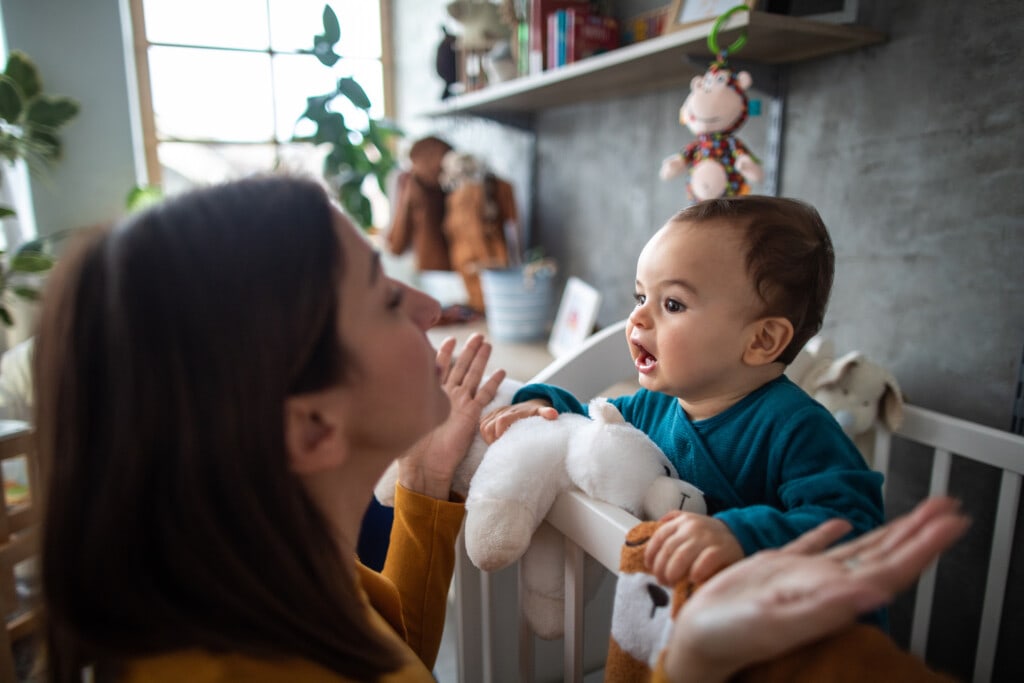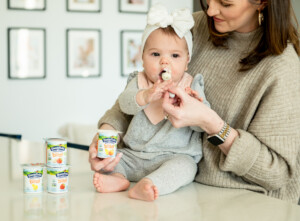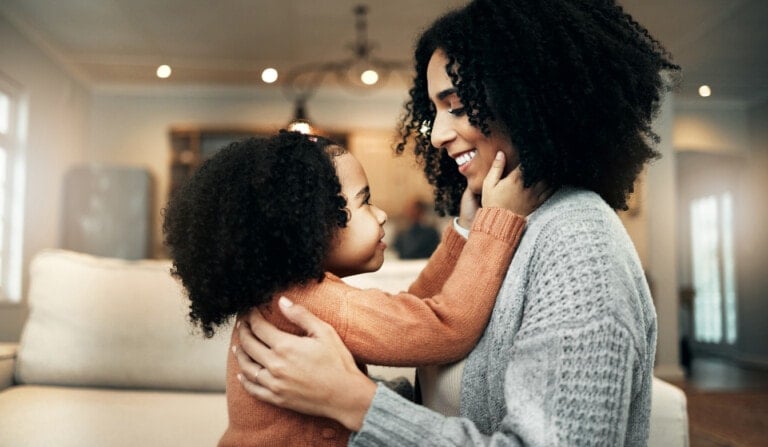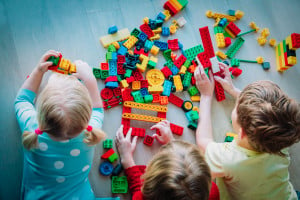Baby talk, also known as parentese, is a way of speaking to a baby in which the pitch is exaggerated and the vowels are elongated.2 In the past, some may have advised cutting the baby talk and using more adult-like speech when speaking with a baby to make sure they learn the language “correctly.” But we now know the opposite to be true. Although it may sound silly, baby talk is one of the best tools parents can use to help their babies start speaking.2
Babies learn how their mouth and vocal tract work together from their earliest coos and babbles. They are starting to communicate. And what do communicators need? A communication partner! By using baby talk, you can meet babies where they’re at from their earliest vowel sounds to set them up for language learning success.
Baby Talk: What You Need To Know
Here’s everything you need to know about baby talk:
Why Do Babies Prefer Baby Talk?
To understand why babies prefer this embellished manner of speaking, we need to consider how the brain learns language. What we know from studies of the brain is that areas for music and language overlap. So, music and melodies can teach babies the language patterns before they even say their first words.1 Additionally, the human brain loves changes in patterns. Because baby talk sounds so different from typical adult-directed speech patterns, it alerts the baby’s brain to tune in. It allows them to focus on all the nuances of their home language — intonation patterns, vowel sounds, and even word boundaries. By breaking language apart like this, babies become better at learning new words quickly.2
Why Do We Naturally Do It?
Communication is all about call and response. When you use this type of communication with your infant, you are sure to get a response (coos, smiles, gurgles).6 This, in turn, pushes you to continue. By having these early conversations with your baby, you are encouraging their continued language development. You are also building an important bond that will continue throughout their development.2
The research also supports it! In a study of caregivers at the University of Washington, parents of 6-month-old children who received coaching in parentese had toddlers with larger vocabularies at 14 months of age.2 More global studies have also found that babies worldwide show a strong preference for the sing-song patterns of infant-directed speech over the flatter adult-directed speech.3 Females are also more likely to do it than males.4 But babies around the world and speakers of all languages can benefit from hearing the infant-directed language.
How Can You Do Baby Talk at Home?
There’s no need to wait when considering using baby talk with your newborn. Beginning in utero, babies can pick up on the sounds and tones of their home language. They can also respond to familiar voices and music.5 As babies begin to coo and babble, parents and caregivers can simply follow the baby’s lead by adding on to what they are already doing. Within your everyday routines, try these tips to incorporate more baby talk:
- When baby smiles or coos, smile or coo back.
- Look at your baby as you are using baby talk. They can observe your lip movements and eyes. It resembles a real conversation.
- Try to assign meaning to each of your baby’s coos and babbles. For example, if your baby says “bababa,” you can respond with “babamama.” When you notice more babbling, you can apply those sounds to actual words. So, when baby says “bababa,” you can say, “Oh, BABY wants a BOTTLE?” (depending, of course, on the context of where you are).
- Encourage continued communication and conversation throughout the day.
- Use a variety of words when communicating with your baby to encourage continued vocabulary development.
- Make baby talk a part of your day, whether during diaper changes, mealtime, or walks in the park. By making it a part of your daily routine, you will offer your baby more language opportunities.
No matter how you do it, talking to your baby is one of the most important things you can do for their language development. Using baby talk gives your baby a boost in building vocabulary and learning their first words by helping them learn to pick up on the sounds, tones, and beats of your home language(s).













